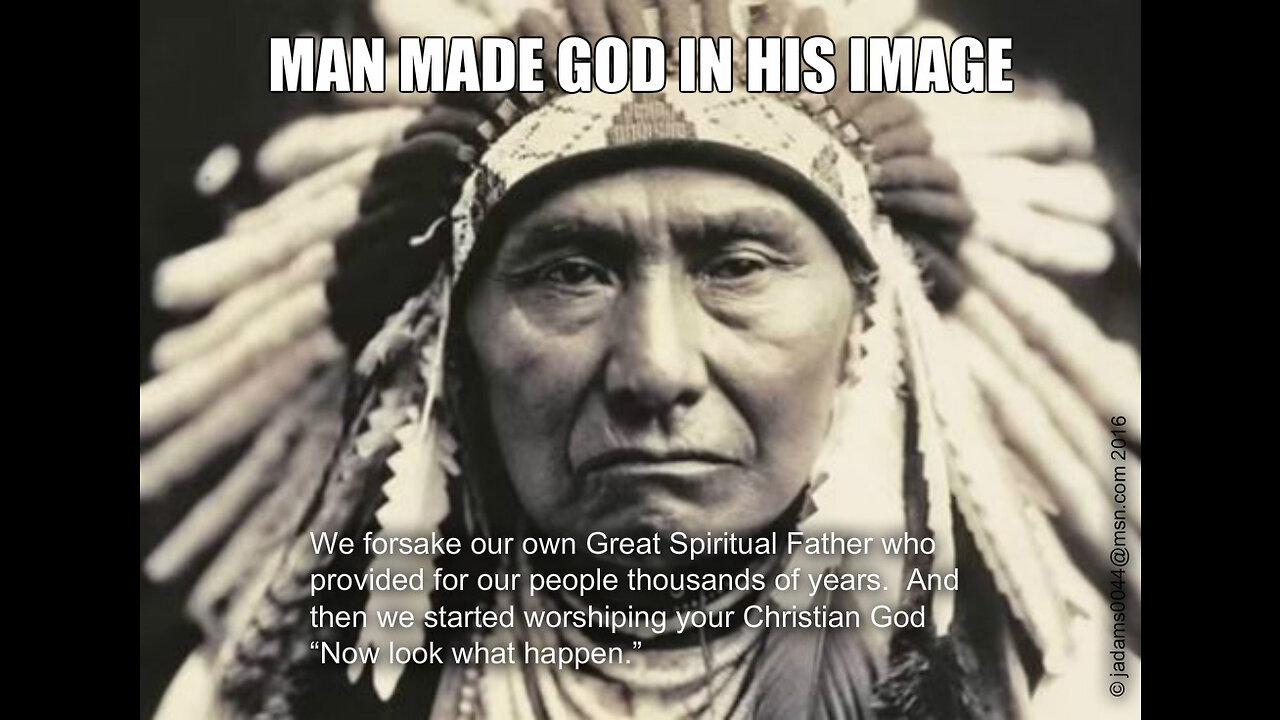Premium Only Content

U.S.A. OWES $350,000 TO EVERY BLACK-WHITE-ASIAN AN AMERICAN INDIANS WHO ARE SLAVE IN PAST ?
Modern perceptions of early modern slavery associate the institution almost solely with Africans and their descendants. Yet slavery was a ubiquitous institution in the early modern world. Africans, Asians, Europeans, and Native Americans kept slaves before and after Columbus reached America.
Black. White. Asian. American Indian. Pacific Islander. For much of the nation’s history, America has discussed race in the singular form. But the language of race is changing. This evolution reflects the central role of slavery in America’s past and the arrival of different immigrant from all over the world ?
The seeds of what was to become modern America were planted on May 13, 1607, when British colonists arrived at an island that they would come to call Jamestown in what is now Virginia.
This first permanent English settlement in the New World would eventually become “the rightful birthing ground of America”; its soil sprinkled with the blood of Native Americans, European settlers, and their African slaves.
To this racial mix we must now include people from the Indian subcontinent.
That’s because, while preparations are underway for a grand commemoration of Jamestown’s 400th anniversary in May-June 2007, we have uncovered compelling evidence of the presence of people from the Indian subcontinent going as far back as 375 years in Virginia people identified in American court documents of the time as “East Indians,” “East India Indians,” or “Asiatic Indians.”
As these South Asians melded into the population, they would be identified variously as “Mullato,” “Negro,” and “colored” in the ethnic cauldron that was evolving in America, thus losing much of their racial distinctiveness with each passing generation, merging into the African-American community, largely unaware of their Indian roots.
My research into this early American history suggests that people from South Asia were transported as indentured servants or slaves— first by trading vessels belonging to the Dutch, French, and English; later, by captains of American vessels.
There is considerable evidence to suggest that “lascars” or seamen were recruited from Indian ports by European trading ships, and, on reaching Europe, succumbed to the promises of agents who enlisted indentured workers for the New World. Or else they were taken as servants by East India Company officials who amassed their fortunes in India, and subsequently returned home to England and thence to their newly established colony in America, where they took their servants with them as a sign of their wealth and status as “nabobs.”
We’ve all heard the story of the “40 acres and a mule” promise to former slaves. It’s a staple of black history lessons, and it’s the name of Spike Lee’s film company. The promise was the first systematic attempt to provide a form of reparations to newly freed slaves, and it was astonishingly radical for its time, proto-socialist in its implications. In fact, such a policy would be radical in any country today: the federal government’s massive confiscation of private property — some 400,000 acres — formerly owned by Confederate land owners, and its methodical redistribution to former black slaves. What most of us haven’t heard is that the idea really was generated by black leaders themselves.
-
 47:58
47:58
What If Everything You Were Taught Was A Lie?
7 days agoExposing Everyone And Everything A Epstein Survivor Interview Human Trafficking Child Sex Ring
3.2K5 -
 UPCOMING
UPCOMING
Sarah Westall
1 hour agoBlackmail, Power & Corruption: The Currency of the Empire - Epstein & more w/ Joachim Hagopian
252 -
 DVR
DVR
The White House
1 hour agoPresident Trump Visits the Federal Reserve
3.24K7 -
 36:14
36:14
Kimberly Guilfoyle
2 hours agoRussia Hoax Reality Check, Live! | Ep240
4.57K3 -
 11:02
11:02
Preston Stewart
6 hours agoThailand–Cambodia Clash Erupts
372 -
 LIVE
LIVE
LFA TV
19 hours agoLFA TV ALL DAY STREAM - THURSDAY 7/24/25
1,526 watching -
 1:07:35
1:07:35
vivafrei
3 hours agoWall Street Journal DOUBLING DOWN on Epstein! Lawyer in Canada DEBANKED! AND MORE!
83.9K20 -
 4:42:20
4:42:20
Donut Operator
5 hours agoI'M BACK/ CRIME/ GAMEBOY CAMERA CHAD
88.6K4 -
 9:51
9:51
Warren Smith - Secret Scholar Society
5 days agoThe Moment Tim Pool Discovered Why Andrew Wilson is so Unstoppable
27.7K23 -
 28:23
28:23
Film Threat
4 hours agoLIVE FROM SAN DIEGO COMIC-CON! (Thursday) | Film Threat Live
12.9K